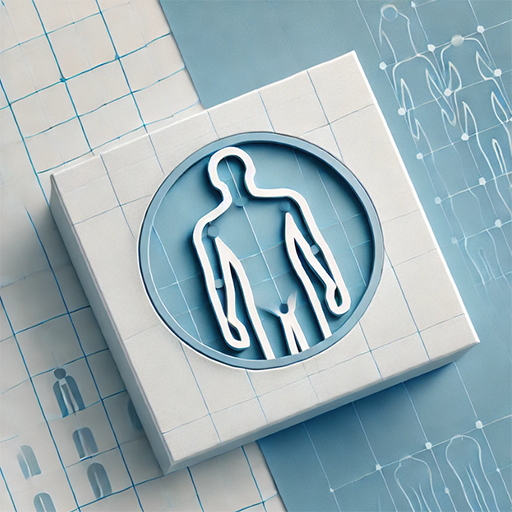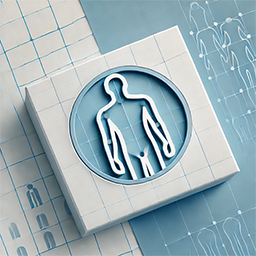Getting started with an exercise habit when you’re overweight can feel intimidating. You might worry about what others will think, or fear that you won’t be able to keep up. That’s completely normal—but here’s the good news: you don’t need to be fit to start. Every small step you take counts, and you can begin right where you are today.
With the right mindset, plan, and patience, you can build fitness safely and sustainably. It’s not about pushing your limits overnight—it’s about creating steady progress that fits your lifestyle. Whether that means walking a few extra minutes a day or doing gentle stretches at home, each move brings you closer to a stronger, healthier you.
In this guide, we’ll walk you through exactly how to start working out when you’re overweight. You’ll find simple steps that build confidence, beginner workouts that are safe for your joints, and motivation tips to help you stay on track. We’ll also cover how to avoid injury and make exercise something you actually enjoy—not a chore. Let’s dive in and get you started on your fitness journey today.
Why Exercise Matters (Even If It Feels Hard Right Now)
Before we get into routines, let’s ground ourselves in why it’s worth starting—because understanding the “why” keeps you motivated when things get tough.
Regular physical activity does so much more than just help you lose weight. It improves heart health, blood pressure, mood, and sleep. (CDC) Exercise helps your heart pump blood more efficiently and lowers your risk of heart disease. It also releases feel-good hormones called endorphins, which can lift your mood and ease stress.
When you start moving more, your body begins to preserve muscle while burning fat, especially if you include some form of strength training. (PMC) This is important because muscle helps your body burn more calories, even when you’re resting.
Even small actions—like walking around your block or doing gentle stretches at home—make a big difference over time. The benefits of exercise start immediately, long before you reach what’s considered an “ideal” level of fitness. (CDC)
For people who are overweight, consistent exercise can bring even greater benefits. It can improve metabolic health, boost insulin sensitivity, and reduce fat buildup in organs such as the liver. (PMC) These changes lower your risk of diabetes and other chronic conditions, helping you feel better inside and out.
So, the effort you put in now can repay you in multiple ways—not just weight loss. You’ll gain energy, confidence, and better overall health that lasts a lifetime.

Step 1: Check Your Health & Set Realistic Goals
Talk to your doctor or health professional
- If you haven’t been active, have chronic conditions (like joint pain, heart disease, high blood pressure, or diabetes), or you carry a lot of weight, it’s wise to get medical clearance first. (CDC)
- Ask: What kinds of movement are safe for me? Are there movements to avoid?
Set small, achievable goals (and celebrate them)
- Don’t aim for 2 hours of intense workouts in week one. Start with 10–15 minutes, or even 5 minutes, if that’s what your body allows.
- Use SMART goals: Specific, Measurable, Achievable, Relevant, Time-based.
- Example: “I will walk 10 minutes every morning for the next 7 days.”
- Track progress, celebrate consistency (not perfection), and revise goals as you grow stronger.
Step 2: Choose Low-Impact Foundation Exercises

Choosing gentle, joint-friendly movements helps reduce risk of injury and keeps things sustainable.
Walk (or march in place)
- Walking is one of the easiest, most accessible workouts. It’s free and modifiable. (Healthline)
- If walking outside is hard, try walking indoors, on a treadmill, or marching in place.
- Aim to gradually increase your walking time.
Chair / Seated Exercises
- If standing is too hard at first, start seated: seated leg lifts, seated marches, seated arm circles. (Medical News Today)
- Chair exercises help build strength without overtaxing joints.
Water-based workouts & swimming
- Water exercises or swimming reduce joint stress while allowing full-body movement. (Obesity Medicine Association)
- If a pool is available, water walking or aqua aerobics are superb options to begin.
Modified bodyweight moves
- Begin with easy variants: sit-to-stand from a chair, wall push-ups, partial squats, trunk rotations. (Medical News Today)
- These build strength gradually.
Gentle cycling or recumbent bike
- If you have access to a stationary or recumbent bike, this offers cardio with less stress on knees and joints.
Step 3: Build a Balanced Routine
Structure your exercise to include both aerobic (cardio) and strength elements over time.
Aerobic (cardio) training
- Aim for 150 minutes per week of moderate-intensity activity (e.g. brisk walking) as a standard target. (CDC)
- That could be 30 minutes a day, five days a week—or smaller bouts like 10–15 minutes, three times daily.
- Over time, when you’re ready, you may increase duration or intensity. (NewYork-Presbyterian)
Strength (resistance) training

- Do strength exercises 2 days per week, targeting major muscle groups (legs, back, chest, arms, core). (CDC)
- Start with bodyweight, resistance bands, or light dumbbells.
- Strength training helps prevent muscle loss and supports metabolic health. (PMC)
Recovery & rest days
- Always include rest or active recovery days—light walking, stretching, yoga.
- Overtraining too early can lead to injury or burnout.
Sample beginner weekly layout
| Day | Focus | Suggested Duration |
|---|---|---|
| Monday | Walk + seated strength | 10 min walk + 5 min seated moves |
| Tuesday | Rest or gentle stretch | — |
| Wednesday | Walk + light bodyweight | 10–15 min walk + 5 min bodyweight |
| Thursday | Seated or aquatic workout | 10–15 min |
| Friday | Walk + strength | 15 min walk + 5 min strength |
| Saturday | Longer walk or fun activity | 20 min (or more) |
| Sunday | Rest or gentle movement | — |
Adapt this depending on your starting capacity.
Step 4: Listen to Your Body & Avoid Common Mistakes
Progress gradually
- Increase duration or intensity by no more than 10% per week.
- If a movement causes sharp pain (especially joint or sharp stabbing pain), stop and modify.
Protect joints and form
- Use supportive shoes.
- Warm up before exercising and cool down afterward (gentle stretching).
- Focus on proper form over “doing more.”
- Use modifications—for example, partial squats instead of full squats until your knees improve. (5 Bridges Health & Fitness)
Stay consistent, not perfect
- Some days will be harder. Some days you may miss sessions. That’s okay.
- Persistence is more important than intensity in the beginning.
Don’t skip nutrition, sleep, stress management
- Exercise is a tool—but your diet, sleep, and stress levels play huge roles in results. (CDC)
- Overdoing exercise while neglecting rest or nutrition can backfire.
Step 5: Motivate Yourself & Make It Fun
Track and monitor progress

- Use a journal, app, or wearable to log your time or steps.
- Track non-scale wins: more stamina, easier movement, better mood.
Choose activities you like
- Dancing, walking with friends, group classes, gardening—pick things you’ll stick with.
Use support & accountability
- Join a walking group, workout buddy, or online community.
- Share your goals with a friend or family member for added encouragement.
Celebrate milestones
- When you hit 14 days straight, or a new personal best, reward yourself (not with food) — maybe new workout clothes, a movie night, or a massage.
Step 6: Scale Up Safely Over Time
Once your body adapts, gradually add:
- More time — extend your walk by 5 minutes.
- More frequency — add an extra day of movement.
- More variety — include hills, intervals, or light jogging (if joints allow).
- Stronger resistance — increase band resistance, dumbbell weight, or bodyweight difficulty.
- Combine — aim for mixed workouts (cardio + strength) in one session.
Research shows combining aerobic and resistance training yields better fat loss, muscle strength improvements, and metabolic benefits. (PMC)
Tips & Frequently Asked Questions (with Answers)
Is 150 minutes of exercise per week realistic for me?
Yes—it’s a guideline, not a rule. The key is to move more than you do now and build gradually. Some activity is far better than none. (CDC)
What if I have joint pain or injury?
- Choose low-impact options: swimming, cycling, seated work.
- Focus on form and modifications.
- Consult physical therapists or trainers for safe adaptations.
Will exercise alone make me lose weight fast?
Not necessarily. Exercise enhances fat loss but often needs to be paired with better nutrition and calorie control. (PMC)
When will I see results?
You may notice improvements in mood, sleep, energy, and stamina within weeks. Changes in weight or appearance may come slower—but those other gains are already valuable.
Conclusion
Starting working out when you’re overweight doesn’t have to be scary or confusing. Everyone begins somewhere, and what matters most is that you start. You don’t need fancy equipment, a gym membership, or a perfect plan—just the willingness to move your body a little more each day. Begin small. Be consistent. Choose movements your body tolerates and that make you feel good. Celebrate even the smallest progress, like walking a few extra minutes or feeling less tired after a short workout. Over time, your body adapts, your strength grows, and new possibilities open that once felt out of reach.
Remember, this journey is not about perfection—it’s about progress. Some days will be easier than others, and that’s okay. What’s important is that you keep showing up for yourself. Each time you move, you’re building confidence, stamina, and a healthier mindset toward fitness.
If you’re ready, take one simple step today: pick one movement—whether it’s walking around your house, doing a short seated march, or trying a gentle water exercise—and do it for 5–10 minutes. That small action is your first victory and the start of something amazing.
Let me know in the comments:
- What activity are you going to start with?
- What’s your first small goal?
I’ll cheer you on every step of the way — you’ve got this.



